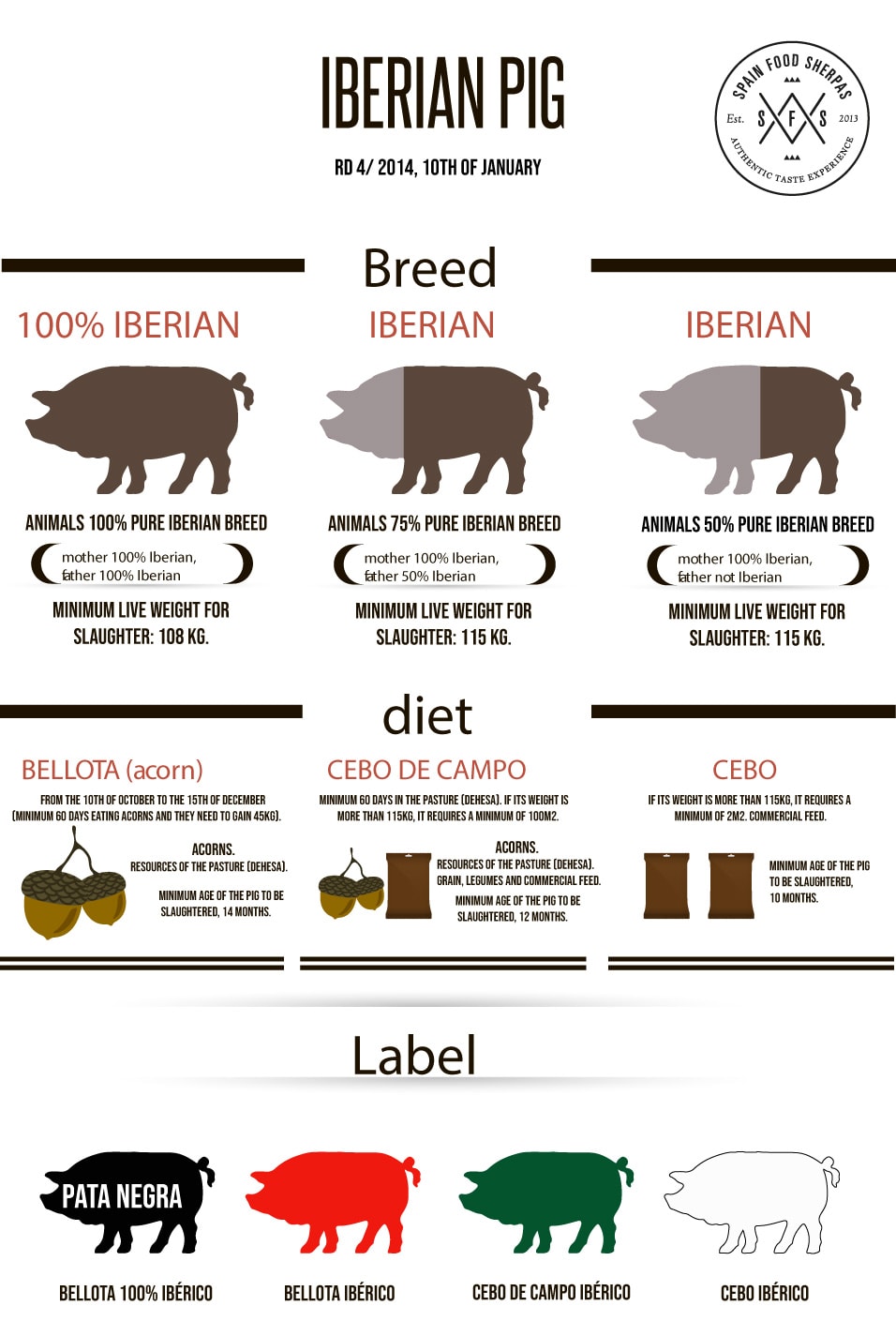The Ultimate Iberico Ham Guide · How to select the right iberico ham | jamon iberico
When it comes to the world famous “Bellota iberico ham”, suddenly even non-foodies start sniffing its exquisite aroma, cherishing its beautiful marbling and letting it gently melt on their tongue… What an experience and what a pleasure!! So no, not all cold cuts are the same.
The ham is actually that rooted into Spanish culture, that even vegetarians might occasionally give into one slice or another. And difficult it is to avoid in our cuisine, since it adds so much flavor to any dish you might think of: on top of a fried egg and potato, with some fresh artichokes or porra soup. Delicious!
But the best way to discover and enjoy all of its unique and highly appreciated features is to simply eat it without anything- no bread, no nothing. Paired with a good wine, of course.
So that’s why we want to show you in this “Ultimate Iberico Ham Guide” what is important to know about our ham and what you need to look for to get the real deal.
The first thing to bear in mind is that Iberico ham is not serrano ham. Apart from the obvious difference in price, the former is a unique breed from the Iberian peninsula while the latter can be a non-Iberico pig breed. The guys from jamonprive have a good article explaining the main differences. Check out this great serrano ham they sell if you’re interested in buying one.

Ok, let’s continue…
When selecting a ham, there are two main aspects you need to take into account: the breed and the diet.
IBERICO BREED
The breed our prized ham comes from is the “ibérico” pork. It’s a black pig that is a mix between our wild boar and the pigs the Phoenicians brought to the peninsula thousands of years ago. Nevertheless, concerning the ham, the percentage of this breed can vary: so you can find 100% Iberian hams (both parents were Iberian; pure-bred), but as well 75% or 50% when they were crossed with other pigs like the Duroc.
IBERICO PIG DIET
The diet on the other side can be divided into three groups:
- Bellota (100% acorn-fed)
- Cebo de Campo (some acorns, resources of the pasture, grain, and feed)
- Cebo (only commercial feed).
The bellota ham is of the highest quality since the pigs roam in pasture and oak groves (“dehesa”) to feed naturally on acorns, grass, herbs and aromatic plants, until the slaughtering time approaches.
At that point, the diet may be strictly limited to acorns, the pig’s delicacy par excellence and key to its flavor: healthy and natural food for the pig, which adds sweetness to its meat; and the exercise of looking for those acorns, moving around the “dehesa”, creating like this its beautiful marbling.
LABEL
In case that explanation is too confusing, in 2014 an official labeling system by color (RD 4/2014, 10th of January) was implemented that helps you to spot right away if the ham is Iberian or not, up to which percentage and the kind of food it received. It’s the following:
- Black, 100% Iberian and acorn-fed. The very best “Pata Negra”.
- Red, at least 50% Iberian, acorn-fed.
- Green, at least 50% Iberian, “cebo de campo” (resources of the pasture and some acorns).
- White, at least 50% Iberian, “cebo” (feed).

And since we cannot top this news, we would just like to give you some last recommendations:
- The Iberico ham, acorn-fed ham-signs of quality and exquisiteness are the intramuscular fat and small white dots. They are just the consequence of a natural curing process, traditional and artisanal. Because that is a fact, Iberico hams are much fattier than serrano hams, but this is where the power and flavor come from. So, if you buy an Iberico ham don’t be scared if you see an outer layer of fat under the skin, before getting to the meat.
- Use the right tools. A long flexible knife for cutting thin slices of ham and a good ham holder to hold the ham securely while you cutting.
- There’s a big difference between the back leg of the pig (what we call iberico ham) and the shoulder (known as paleta iberica). First of all, the back leg or ham is larger and weighs normally between 7 and 8,5 kg while the shoulder weighs 4-5,5 kg. The ham has less intermuscular fat, that’s why many choose a paleta over a jamón. The ham is less boney and has more meat. Also, the curing process is longer due to its larger size and therefore, the price is higher.